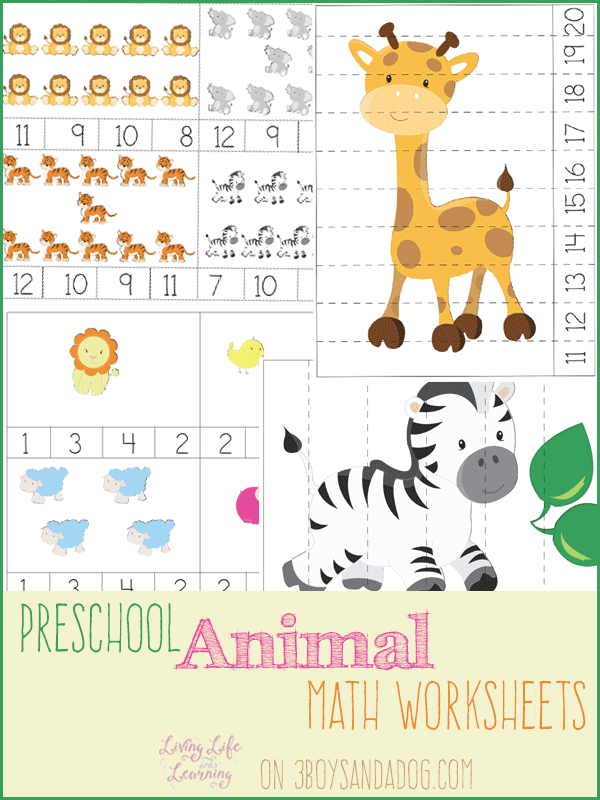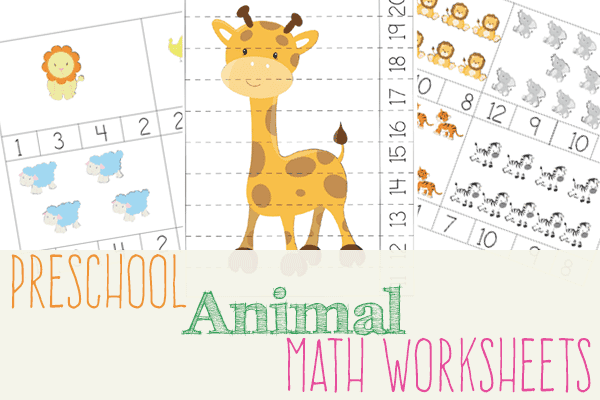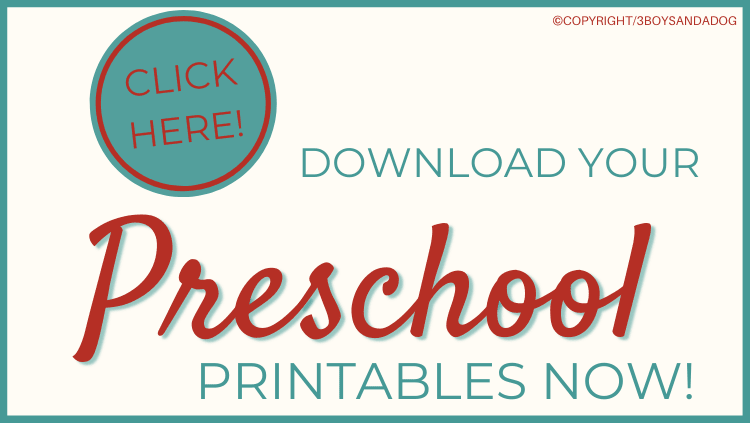These homeschool freebies are a frugal way to get your preschooler learning without realizing it. Preschool printables are a frugal and fun way to teach our preschooler. Math worksheets can be a chore but when they come in a fun theme, your student may forget that they are doing math at all.

This 24 page printable set includes cutting practice, tracing, counting cards and counting mat (1-12). The counting cards can be cut apart, if so you will want to print them out onto cardstock to ensure that they last. You can them use a clothes pin to clip the correct answer. Or you could just circle and place a counter over the correct answer, it’s up to you.
The counting mats allow you to place manipulatives like pom poms or chips onto the number as you count them. You could also use a bingo dabber or just color them in. These worksheets also come writing practice where you child can practice writing out the actual number in pencil.
If you’d like to use them again, place the sheets in a sheet protector and have your child use a dry erase marker. They easily wipe off to be reused again.
My daughter loves using her scissors for cutting practice but overprotective mama here always keeps an eye on her while doing so. I wish we had a smaller pair of scissors because her hand is so tiny that even the kid sized scissors are so big for her.
Bring a fun animal theme into your preschool with these adorable animal math worksheets.
What are ways to make math learning fun for kids?
Math can be an exciting subject for kids if it is taught engagingly. Using hands-on activities is a great way to make math learning fun for kids.
Using games, manipulatives, and other interactive materials can help children truly understand mathematical concepts and tangibly relate to them.
Additionally, making time for play allows kids to explore their creative side while figuring out quantitative problems and build confidence by allowing them to make mistakes without feeling overwhelmed or discouraged.
Kids should also be encouraged to talk about their work and explain different strategies they used during problem-solving.
Lastly, incorporating music and art into math activities can bring an added element of fun and spark creativity within the classroom.
What are some tips for helping children learn addition?
Helping children learn addition can seem overwhelming, but luckily there are several strategies to make addition easier.
One key step is to help dynamic visual learners by providing manipulatives like snap cubes or dominoes.
Allowing the child to manipulate these materials physically can build numerical understanding in a fun and tactile way.
Additionally, another helpful tool is to use mnemonics; teaching rhymes or stories around numbers can help the process of memorizing facts and increase confidence in solving problems.
Finally, providing clear explanations of mathematical language can also be useful; each new term should be taught carefully with a sufficient explanation so that students have a full understanding before challenging them with more complicated tasks.
With these tips, helping children learn addition shouldn’t be an issue!
What are some simple tips for helping children learn subtraction?
Subtraction is an essential skill for children to learn, and it can be made easier to comprehend if taught correctly.
Utilizing objects such as blocks or coins can help children visualize subtraction and understand the concept more clearly.
Teaching addition first can also aid in understanding subtracting. Having them count down before subtracting or counting back to figure out their answer are some simple methods to help children learn subtraction.
Another helpful way of teaching subtraction is by tying it into things they do daily, such as mealtime. Have them assemble the ingredients they need, then take some away when asked how many people are eating and what was left over afterward.
Incorporating different activities and scenarios will make learning subtraction fun and memorable!
What are fine motor skills important for educating children?
Educating children depends on various factors, one of which is mastering fine motor skills. Developing these skills in children helps set the stage for honing higher-level thinking processes and performing important daily tasks.
Many activities can help strengthen fine motor skills, such as stringing beads, tin-can bowling, cutting shapes with scissors, playing interactive games, and manipulating play dough.
Providing children opportunities to engage in meaningful activities involving fine motor skill development is strongly recommended because it prepares their brains for learning.
Fine motor strength is essential for handwriting or typing capabilities, organizing a pencil case or backpack, fastening clothing items, and holding a utensil when eating meals.
Enhancing these tiny muscle movements truly impacts overall educational success in little learners.
Why do learning packets work well with children excited to learn?
Learning packets can be a great way to engage children’s natural enthusiasm for discovering new things. Providing solid educational content in an engaging, fun, and educational package can help the learning process go smoother for all involved.
Learning packets often contain material that is related to topics the children are already familiar with, which not only eases their transition into formalized learning but also gives them a sense of ownership over their own education.
Additionally, by presenting content as a game or other style of entertainment, these fun but educational activities pique kids’ interests even more, enabling them to foster a resentment-free relationship with schooling.
With elements like quizzes, puzzles, and draw-it-yourself worksheets combined with exciting visuals and memorable characters, learning packets can be geared to any topic and level of difficulty.
This makes them a precious tool for teachers hoping to get their students excited about moving forward in the world of structured study.
How often should kids do math?
Doing math is an important skill for kids to have, and the frequency with which they do it should vary depending on their age and the material they are learning.
Kids in elementary school might do math three or four times a week to help reinforce concepts like addition, subtraction, multiplication, and division.
Middle schoolers could dedicate more time to learning algebraic equations or geometry topics like area and perimeter that require a higher level of understanding.
High school students should work on math as often as possible to prepare them for college-level courses.
Practice is essential when studying math, so finding ways to integrate small amounts of math into everyday life can be beneficial, even if it’s just going over multiplication tables at mealtime with the family once a day.

Download the Animal Preschool Math Worksheets (1-12) here.
Other posts you might enjoy:


Monique is a biology graduate, web designer and homeschooling mother to 3, you can find her blogging about homeschooling, activities and resources at Living Life and Learning. You can follow her on Facebook, Pinterest or Instagram.





Apples Apples Apples Book Companion Printables - CrystalandComp.com
Sunday 24th of September 2023
[…] Animal Preschool Math Worksheets […]
Aisha
Monday 12th of March 2018
Animal preschool math worksheets
Michelle Llorin
Friday 29th of May 2015
@MomCoApp Adorable!